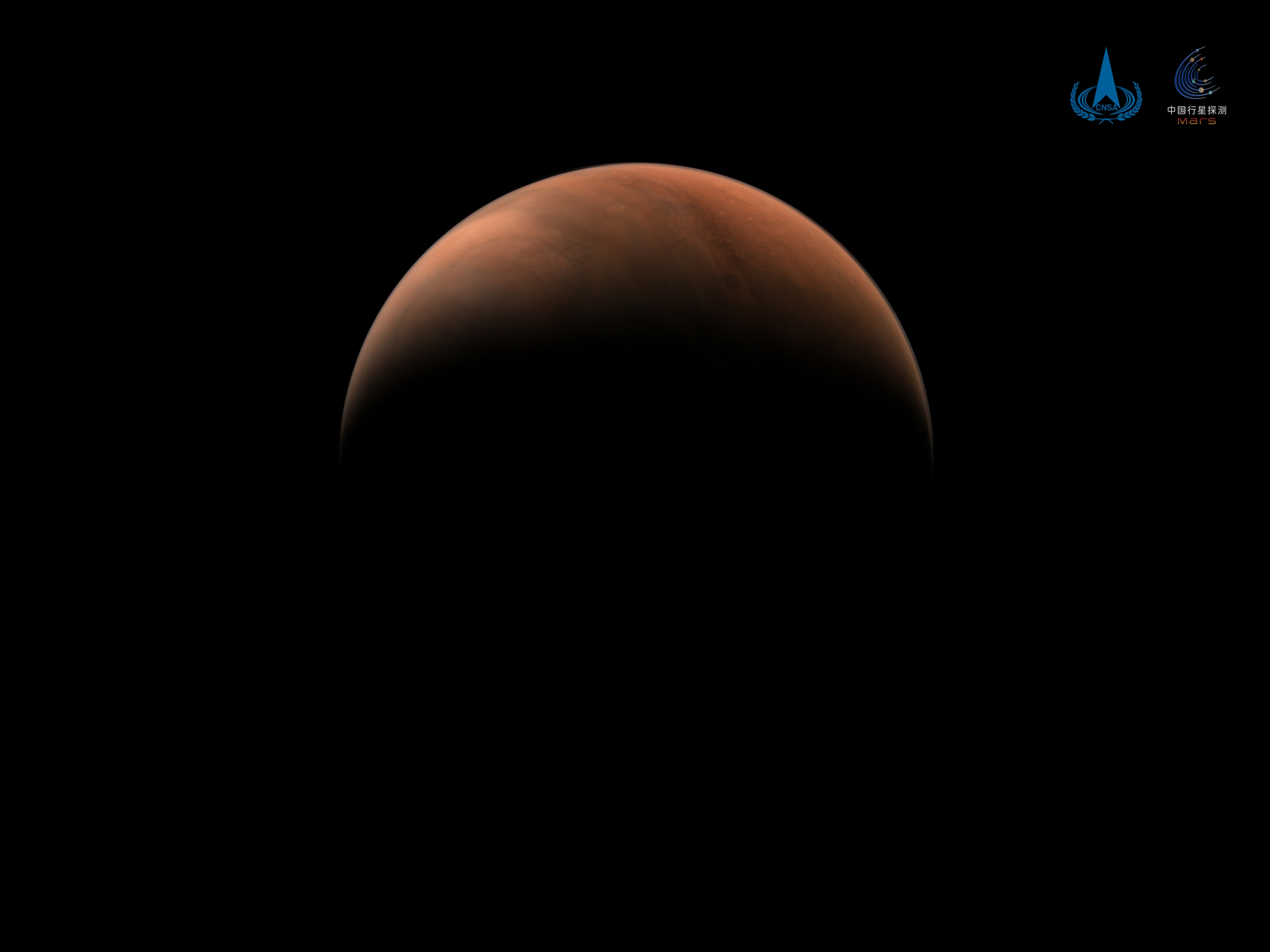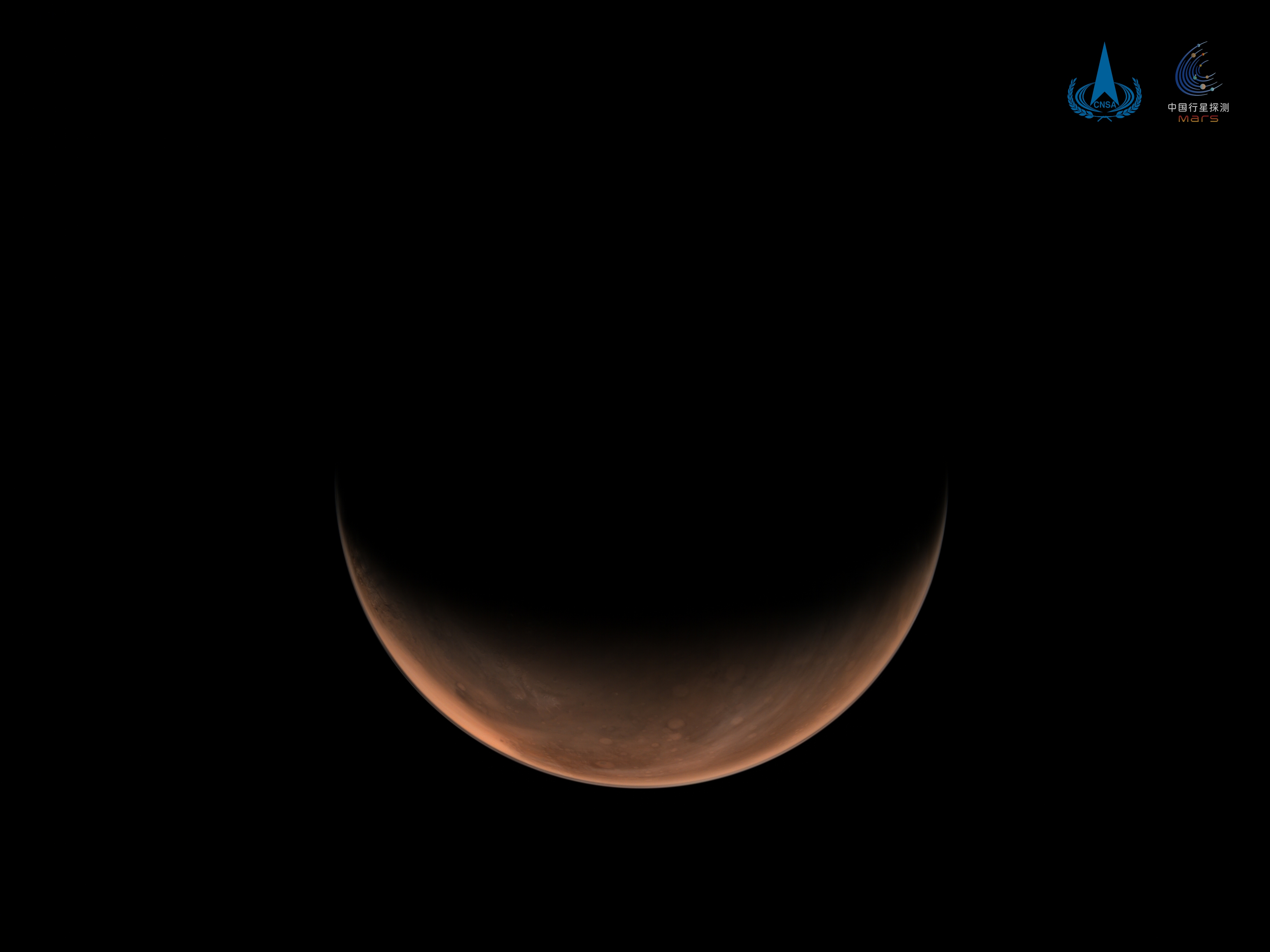China's Tianwen-1 spacecraft captures stunning crescent Mars photos
China's Tianwen-1 spacecraft has captured stunning images of Mars as a bright red sunlit crescent in deep space.
The photographs were separately taken over the northern and southern hemispheres of Mars with the medium resolution camera on Tianwen-1, China's first interplanetary mission.
The result is two glorious shots showing the illuminated eastern hemisphere of Mars, including surface features and the faint edge of the Martian atmosphere. The photographs were taken at a distance of around 6,850 miles (11,000 kilometers) away from Mars.
Related: The latest news about China's space program
The image of Mars’ southern hemisphere, in which the lower portion of the image is illuminated, was taken on March 16 while the northern hemisphere shot was taken by the same camera on March 18.
The Tianwen-1 probe is currently in a polar orbit around Mars which takes it as close as 174 miles (280 kilometers) to the surface and as far away as 36,660 miles (59,000 km), according to the China National Space Administration (CNSA).
The orbit allows the spacecraft to pass over the primary candidate landing site for the mission's rover.
Breaking space news, the latest updates on rocket launches, skywatching events and more!
The spacecraft’s high resolution camera has been collecting detailed images of the target landing site in preparation for a rover landing attempt in May or June, according to CNSA.
Tianwen-1 arrived at Mars on Feb. 10, just a day after the United Arab Emirates’ Hope probe, and a week ahead of NASA’s Perseverance rover.
Follow us on Twitter @Spacedotcom and on Facebook.

Andrew is a freelance space journalist with a focus on reporting on China's rapidly growing space sector. He began writing for Space.com in 2019 and writes for SpaceNews, IEEE Spectrum, National Geographic, Sky & Telescope, New Scientist and others. Andrew first caught the space bug when, as a youngster, he saw Voyager images of other worlds in our solar system for the first time. Away from space, Andrew enjoys trail running in the forests of Finland. You can follow him on Twitter @AJ_FI.


